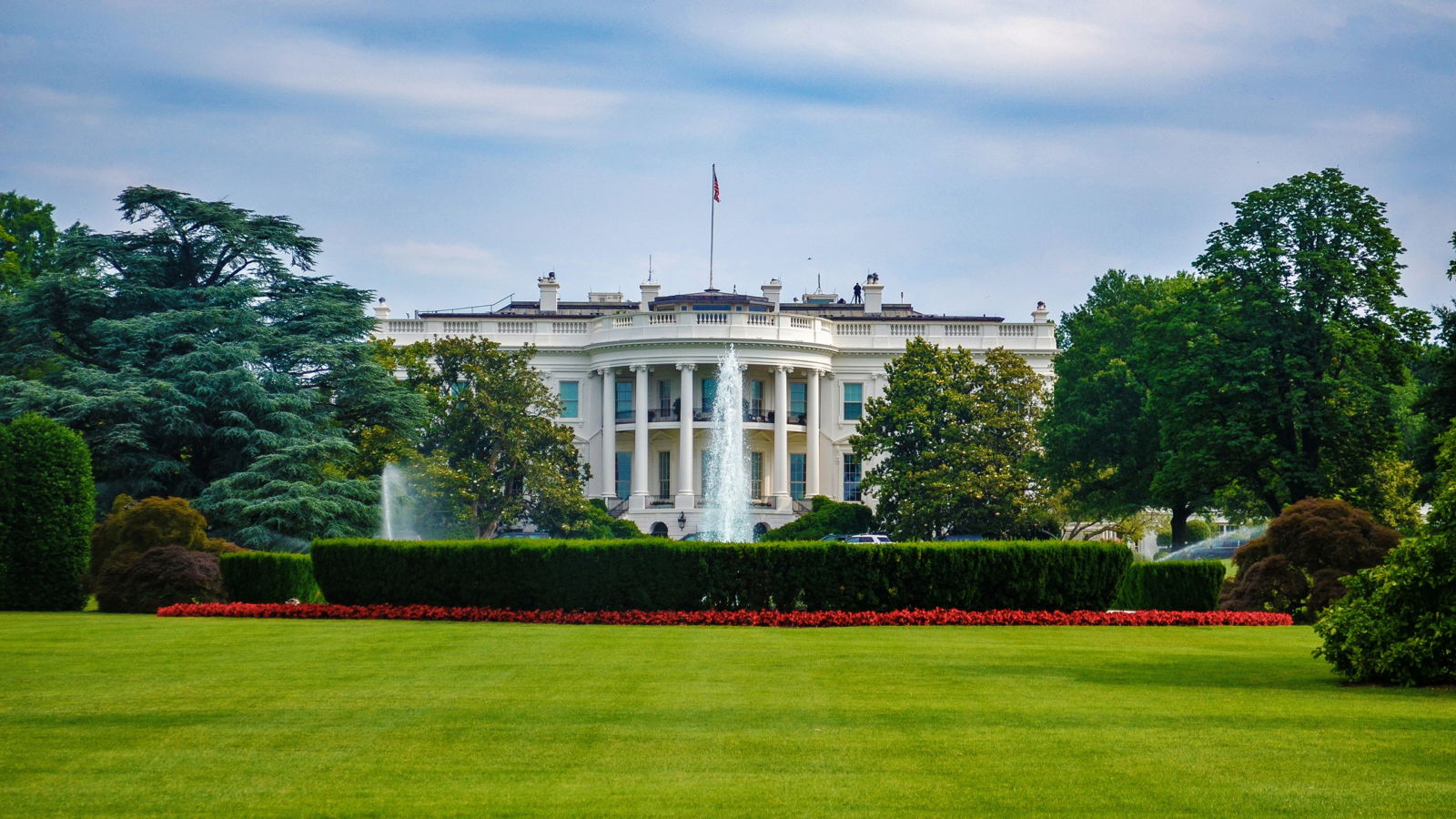Good morning and happy Monday.
What do 1 million retail investors and 75,000 financial advisors have in common? They’re all reading The Daily Upside and our wealth management vertical Advisor Upside.
Now, we’re launching ETF Upside, a brand-new newsletter that helps readers navigate the complexities of the asset management industry and what it all means for money managers. Whether you’re looking for tips on new fund strategies, asset allocations, or the fast-moving world of Wall Street, our newsletter is here to become your daily handbook. ETF Upside will delve into industry trends and highlight the asset management stories that matter to financial advisors.
Whether you’re just starting out or aiming to optimize your career, our newsletter is tailored to provide you with the expert guidance you need to succeed every Monday and Wednesday morning. If you’re reading this, you already know. Let’s dive right in…
Can Buffer ETFs Really Help Weather a Market Plunge?

Welcome to the buffer zone.
The dramatic stock market dive, amid the announcement of historic tariffs last week, may test the recent popularity and performance of buffer ETFs, also known as defined-outcome funds. The products are designed to help investors weather short-term volatility and have exploded in popularity this year. They may be even more attractive to investors as the S&P 500 plunged nearly 6% on Friday, following earlier drops last week. How long the markets stay down, or if they keep dropping, remains a question.
“I would remind investors that the stated buffer/cap on these ETFs apply on the end date of their outcome period, and their protection might not hold up during the outcome period,” said Lan Anh Tran, a manager research analyst for Morningstar. “Some 10% buffer ETFs, for instance, are in the red right now alongside the market.”
A Safe Haven?
Buffer ETFs use options to help the products limit losses. Those ETFs started becoming popular following the volatility during the Covid-19 era, and were seen as one way of giving market exposure to cautious investors. They now represent more than $50 billion in assets, or about a 10-fold increase from five years ago. Relatedly, covered-call ETFs, which write call options on shares and generate income from the premium, have also gained favor as a hedge against volatility. Those products, also known as derivative-income funds, now represent $108 billion in assets, according to Morningstar Direct data.
While buffer ETFs can reduce downside, much depends on the terms and when they’re purchased. For a 12-month-duration, 10% buffer ETF with a period from April 1, 2025, through March 31, 2026, “investors can expect a 10% buffer if the market is down in a year, but don’t be surprised if it moves with the market in between those dates,” Anh Tran said.
Regardless, the products have been selling this year at rates doubling that of last year, per Morningstar Direct data:
- Defined-outcome (buffer) ETFs raked in over $4 billion this year through March, up from $2 billion during that time in 2024.
- Derivative-income (covered-call) ETFs sold $16 billion, up from $7 billion.
“While these ETFs can be an option for investors struggling to stay invested, their results depend a lot on when you buy them,” Anh Tran said. A ladder buffer ETF can alleviate some of the path dependency/market timing element, she added.
Running for Cover. ETF buyers have also flocked to commodities products this year. Inflows into the category were at far higher levels in February and March than at any time last year, data from FactSet show, though still small relative to equity and fixed income. That category also may not provide much cover: The S&P GSCI, for example, was down 5% Friday, bringing its total decline to 6% year-to-date.
Are Active ETFs The Right Fit?

Active ETFs are on the rise — but are they right for your clients? With features like tax efficiency and intraday trading, along with the potential for benchmark-beating performance, they offer a compelling blend of flexibility and control.
But with so many vehicles out there — mutual funds, SMAs, ETFs, and more — picking the right one isn’t always simple.
That’s where Allspring comes in. We help advisors cut through the noise, so you can focus on what matters most: client outcomes.
Explore how Allspring and active ETFs can work for your clients.*
*Carefully consider a fund’s investment objectives, risks, charges, and expenses before investing. For a current prospectus and, if available, a summary prospectus, containing this and other information, visit allspringglobal.com. Read it carefully before investing.
Investing involves risk, including the possible loss of principal. Allspring ETF Funds are not available for distribution outside of the United States. Allspring Funds Distributor, LLC (Member FINRA/SIPC).
Everything’s Bigger in iShares’ Texas ETF
Texas will likely remain a US state for some time, much to the chagrin of the third of its residents who long for it to secede. But that doesn’t mean you can’t invest like it’s a standalone country.
BlackRock is working on an ETF to do just that. The company recently filed an initial prospectus with the Securities and Exchange Commission for the iShares Texas Equity ETF, a passively managed fund that would track a similarly named Russell index. It would invest primarily in companies headquartered in the Lone Star State. According to the world’s largest asset manager, there’s plenty of untapped demand.
“Our clients have expressed interest in accessing the Texas economy,” a company spokesperson said in a statement, but did not comment further, citing the registration process.
The State of Things
For the thousands of ETFs on the market, there are next to no products that focus on stocks in individual US states, though there are plenty that specialize in state muni bonds. Data from Morningstar Direct show just two state-specific equity ETFs, both of which are from the same firm and invest in Texas-headquartered businesses. Those are Texas Capital’s $28 million Texas Equity Index and $12 million Texas Small Cap Equity Index ETFs.
Texas is home to a wide range of major public companies from ExxonMobil to AT&T. Its business-friendly policies have attracted more in recent years, including Charles Schwab and Oracle. It’s also an increasingly popular location for stock exchange providers, which has helped give it the nickname Y’all Street. And of course Texas’ economy is big:
- The state’s GDP is $2.6 trillion, and it’s home to 55 Fortune 500 companies.
- It is the fastest-growing state by population, attracting more than half a million people last year.
Corralling Stocks. The Russell Texas Equity Index is a subset of the Russell 3000, and to be included in the forthcoming iShares ETF, companies must have market caps of at least $500 million and a three-month daily trading volume of $3 million or more, according to the prospectus.
To compare, the top holdings in the existing Texas Capital Texas Equity Index ETF are Tenet Healthcare, Crowdstrike, Tesla, McKesson, Schwab, and Waste Management. That fund, which launched in 2023, has a return year to date of (6)% and a return of 9% over a year, compared with (7)% and (1)% for the Syntax US 800 Midcap Index for those time periods, respectively.
The ETF Betting on Women-Led Companies

Fewer than 10% of S&P 500 companies have women as CEOs. If that figure seems small, consider the number of ETFs that see the statistic as an opportunity: Among roughly 12,000 funds across the world, there may be only one focused on top women executives.
The two-year-old Hypatia Women CEO ETF (WCEO) operates on the premise that women-led companies outperform. The firm’s managing partner, Patricia Lizarraga, has focused on investing in women in leadership roles since 2007. “Our investment thesis is that women CEOs will outperform because it’s harder for them to become CEOs than the average CEO,” Lizarraga said. “You can deliver just the female performance. In our view, our investment thesis is that mathematically, there is alpha there.”
WCEO, which targets companies with at least $500 million market capitalizations and a median of $9 billion, has been flat since September 2023, (11)% over a year, and (16)% year to date, which is on par with other comparable indexes like the Russell 2000 and the S&P Midcap 400. But, distribution has been challenging, particularly in the current market, and the fund represents only about $4 million in assets.
ETF Upside interviewed Lizarraga on the current market environment and what it will take to create a “snowball effect” for future investments.
Extra Upside
- For the Win. Fidelity wins the first SEC approval to expand semi-transparent ETF holdings.
- Head For the Hills. ETF investors run for safety in March.
- Actively Managed ETFs Offer Many Potential Benefits But Are They Right For You? Follow the route to active ETFs to find out.**
** Partner
ETF Upside is written by Emile Hallez. You can find him on LinkedIn.
ETF Upside is a publication of The Daily Upside. For any questions or comments, feel free to contact us at etf@thedailyupside.com.

